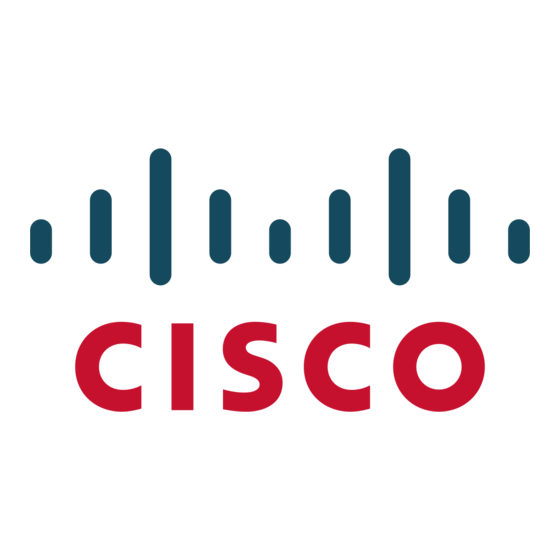Cisco 12 series Руководство по системе - Страница 28
Просмотреть онлайн или скачать pdf Руководство по системе для IP-телефон Cisco 12 series. Cisco 12 series 50 страниц. Cisco unified ip phones chapter 43
Также для Cisco 12 series: Руководство по системе (36 страниц)

Directory Numbers
Cisco CallManager System Guide
40-28
the call on hold, user can retrieve the call from the Cisco IP Phone 1 or
Cisco IP Phone 2. When User 2 dials directory number 2000 for the second
call, only Cisco IP Phone 2 and Cisco IP Phone 3 ring.
The following example demonstrates how an H.323 client, MGCP POTS
Phone, and Cisco IP Phone with the same shared line appearance, directory
number 2000, can use the Call Forward Busy Trigger and the Maximum
Number of Calls settings. This example assumes that two calls occur. The
following values have been configured for the devices:
H.323 client—Configured for a maximum call value of 1 and busy trigger
–
value of 1
MGCP POTS Phone—Configured for a maximum call value of 1 and
–
busy trigger value of 1
–
Cisco IP Phone—Configured for a maximum call value of 2 and busy
trigger value of 2
When User 1 dials directory number 2000 for the first call, all three devices
ring. The user for the Cisco IP Phone picks up the call; when the user for
Cisco IP Phone puts the call on hold, the user(s) for H323 client and MGCP
POTS Phone cannot retrieve the call. If User 2 dials directory number 2000
for the second call, only the Cisco IP Phone rings. Users for the MCGP POTS
Phone or the H.323 Client cannot answer the call.
For information on Maximum Number of Calls setting, refer to the
Number Configuration Settings"
Guide.
The check box, Update Directory Number of All Devices Sharing this Line,
in the Directory Number Configuration window, determines whether a shared
directory number gets updated to all devices sharing the number. Refer to the
"Update Directory Number of All Devices Sharing this Line" section on
page 40-30
for more information.
A shared line phone should not be able to interact with the call that it rejects,
due to the limitation of the maximum number of calls per DN or for other
reasons. For example, A and A' share the same DN. A' and A have the
maximum number of calls set to 1 and 2, respectively. When C and D call the
share line DN, A' answers these two calls. A can only interact with the first
call, as it rejects the second call due to its own maximum number of calls per
DN limitation. For this reason, Cisco recommends that the same value be
configured for the maximum number of calls for all shared line MCID
Chapter 40
in the Cisco CallManager Administration
Cisco IP Phones
"Directory
OL-7135-01
